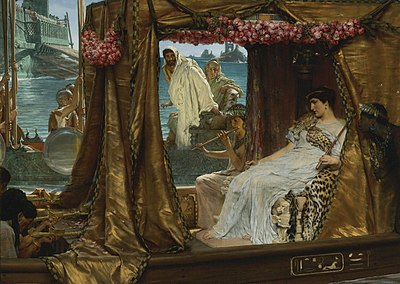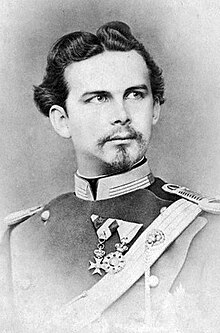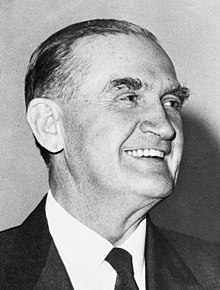A Brief History
On April 25, 1644, the last of the Ming Dynasty Emperors, Zhu Youjian, known as The Chongzhen Emperor, committed suicide when his armies were unable to contain a peasant rebellion. Over the centuries, many leaders of countries, kingdoms, etc. have for one reason or another committed suicide, an ignoble end to the glory of leading a country or kingdom. Today we list 10 such leaders and former leaders that killed themselves.
Digging Deeper
1. Zhu Youjian, “The Chongzhen Emperor,” China, 1644.

The Ming Dynasty reigned in China from 1368 to 1644, with 17 emperors in the line, ending with Zhu Youjian. Having taken over after the collapse of the Yuan Dynasty (Mongol), the Ming was the last Han Chinese (the predominant ethnic group of China) dynasty. The Ming Dynasty was replaced by the last Imperial Dynasty of China, the Manchu (Manchurian) Qing Dynasty, which ruled until the formation of the Republic of China in 1912. During the Qing Dynasty, China became the largest empire in world history, by population. History is unclear as to the exact method of the suicide of Zhu Youjian, said to be accomplished either by hanging or strangling himself with his sash, which amounts to more or less the same thing. He was buried with the other Ming emperors in the Ming tombs.
2. Adolf Hitler, “The Fuhrer,” Germany, 1945.

After leading Germany to destruction in World War II, Adolf Hitler realized his lot would not be a happy one if he were to be captured by either the Soviets or the Western Allies. He took the coward’s way out and shot himself in the head with his personal Walther PPK pistol, while his wife, Eva Braun, killed herself with cyanide. Hitler tested the cyanide on his German Shepherd, Blondie, before Eva used it to kill herself. Notable Hitler cronies and co-conspirators in the devastation that was World War II, Heinrich Himmler and Herman Goring, also committed suicide after being captured by the Allies, thus cheating the hangman. Hitler’s Minister of Propaganda, Joseph Goebbels not only killed himself to avoid capture, he also killed his entire family, staging the scene to have them appear to be peacefully sleeping!
3. Marc Antony and Cleopatra, Rome/Egypt, 30 BC.

Having aligned herself with Julius Caesar and then Marc Antony, Cleopatra, the erstwhile Pharaoh of Egypt, picked the losing side in the struggle for power over Rome after Julius Caesar was assassinated. When the battle was lost, she killed herself to avoid the humiliation of a trial and execution, as did her buddy Marc Antony (stabbing himself with his own sword). Cleopatra was the last Ptolemaic Pharaoh of Egypt and was of Greek origin. Unlike her predecessors, she was the first of her Dynasty to speak Egyptian instead of only Greek. She is alleged to have killed herself by allowing an Asp (venomous snake) bite her bosom.
4. Alan Gabriel Ludwig García Pérez, Peru, 2019.

Having served as President of Peru from 1985 to 1990, and again from 2006 to 2011, Garcia Pérez was linked to a massive scandal involving Brazilian politicians known as the “Odebrecht scandal” that has reached across South America. Ollanta Humala followed Garcia Pérez as President of Peru, from 2011 to 2016, and is also implicated in the Odebrecht Scandal. The next President of Peru resigned in 2018 (Pedro Pablo Kuczynski), another suspected criminal involved in the same scandal! García Pérez shot himself in the head just as police officers were about to arrest him.
5. Roh Moo-hyun, South Korea, 2009.

Roh served as President of South Korea from 2003 to 2008. Roh managed to alienate the United States (George W. Bush administration) and was the least popular (i.e., most unpopular) President of South Korea to date. After leaving office, Roh retired to a duck farm, where an ever-increasing amount of supporters visited him in an attempt to get him back into the political picture. His political opponents started an investigation of Roh, alleging the taking of bribes. In 2009, a little over a year after leaving office, Roh committed suicide by jumping off a cliff adjacent to his property, leaving behind a suicide note that said, “there are too many people suffering because of me.”
6. Marcus Porcius Cato Uticensis (Cato the Younger), Rome, 46 BC.

Cato was serving as Praetor of Rome and had a reputation as an incorruptible and decent politician, certainly attributes that would doom his political career! Cato opposed the Triumvirate of Julius Caesar, Pompey and Crassus, but failed to get enough support in the Roman Senate and the military to prevent Caesar from crossing the Rubicon and seizing power in Rome after a Civil War in which Cato fought with Pompey against Caesar. After winning the Battle of Thapsus in 46 BC, Caesar slaughtered his enemies instead of offering them clemency in exchange for fealty. Though Cato had not fought in the battle, the despondent man set about to kill himself by the use of his own sword. Unfortunately for Cato, Cato blundered the attempt and succeeded in cutting open his abdomen, partially spilling his entrails outside his body. His attendants and supporters wanted to sew Cato’s abdomen back up, as it was apparent his bowels had not been pierced, but Cato refused, and instead began to pull his own intestines out of his body to hasten his death! Cato was finally successful in killing himself after tearing open his wound with his bare hands and pulling out his guts. Ouch!
7. King Ludwig II, Bavaria, 1886.

The only known world leader to have killed himself by drowning (though it is possible that Australian Prime Minister Harold Holt, 1967, intentionally allowed himself to be drowned during an ocean swim, though that is only speculation, as other theories such as accidental drowning and shark attack are also offered as reasons for Holt’s disappearance), Ludwig had made a name for himself as a spendthrift, borrowing large sums of money he could not afford to repay. Ignoring his financial advisers, Ludwig demanded other European royals loan him more and more money. Having ascended to the throne in 1864, by 1886 Ludwig was thought by many (mostly political opponents) to have lost his mental ability to lead Bavaria. Never marrying or producing an heir, Ludwig was rumored to be a homosexual, a condition considered a mental illness at the time. Declared insane, Ludwig attempted to flee Bavaria but was caught and placed into custody for mental health reasons. Ludwig had been declared insane by a doctor that had never examined or even met the King! While taking an unescorted outdoor walk with Dr. Gudden (the man that had declared him insane), the 2 men never returned, causing others to search for the King and his physician. The bodies of both Ludwig and Dr. Gudden were found in Lake Starnberg in waist deep water. Gudden was found to have suffered blows to the head and signs of strangulation, while Ludwig was otherwise unmarked and did not have water in his lungs. Still, authorities declared that Ludwig had died from suicide by intentional drowning. Of course, with a supposedly un-witnessed death of a monarch, there are many conspiracy theories about what “really” happened, including that Ludwig was shot, although the autopsy did not report any gunshot wounds. Officially, Ludwig is the only world leader to have committed suicide by drowning himself. Officially.
8. John McEwen, Australia, 1980.

Suffering from ill health, McEwen decided to kill himself by refusing to eat, a relatively novel way for a national leader to commit suicide. McEwen had become a fill-in Prime Minister of Australia with the disappearance of Prime Minister Harold Holt in 1967, serving only until a new Prime Minister could be elected in 1968. PM for only 23 days (December 1967 to January 1968), McEwen was at the age of 67 the oldest Australian to serve as Prime Minister. He was given a courtesy title as “Deputy Prime Minister” upon leaving office. McEwen suffered from a severe case of Dermatitis, exceptionally painful as his age increased. By the time he reached the age of 80, he could take the pain no longer and refused to eat in order to hasten his death in 1980.
9. Pierre Eugène Bérégovoy, France, 1993.

Having been ousted as Prime Minister and facing scrutiny over a million Franc interest free loan, Bérégovoy shot himself in the head, killing himself at the age of 67. French President François Mitterrand blamed pressure from a lurid press as the reason Bérégovoy had killed himself, saying of the suicide, “the honour of a man was thrown to the dogs.”
10. Anson Jones, Republic of Texas, 1858.

A fascinating character, Massachusetts Native and member of a Masonic Lodge and of the Independent Order of Odd Fellows, Jones moved to Seneca, New York where he opened a schoolhouse and taught school. In 1820, he became a licensed physician, but failed financially. Arrested as a debtor in Philadelphia, Jones made his next stop in Venezuela in 1823, but returned to Philadelphia to earn his MD degree. Once again, Jones failed to make a living as a doctor, and sought a brighter future in New Orleans in 1832. His business as a merchant failed in New Orleans (a trend?) and Jones moved once again, this time to Texas. In Texas Dr. Jones finally made the practice of medicine a financial success, while he also became one of the increasing number of American voices lobbying for the independence of Texas from Mexico. Jones worked as both a surgeon and as a Judge Advocate for the Texas Army during the War for Independence from Mexico, returning to his adopted hometown of Brazoria after the revolution. Jones became the Grand Master of a new Masonic Lodge in Texas and entered the world of politics. He served in the Texas Congress and was appointed as Minister to the United States, and later as Texas Secretary of State before being elected as the last President of Texas (1844-1846) before the annexation of Texas to the United States. Depressed and deeply bitter about not being appointed a US Senator from Texas, Jones suffered a crippling injury from a fall from a horse. The despondent ex-President shot himself to death in 1858 at the age of 59.
Question for students (and subscribers): What other notable leaders can you think of that had committed suicide? Please let us know in the comments section below this article.
If you liked this article and would like to receive notification of new articles, please feel welcome to subscribe to History and Headlines by liking us on Facebook and becoming one of our patrons!
Your readership is much appreciated!
Historical Evidence
For more information, please see…
Joiner, Thomas. Why People Die by Suicide. Harvard University Press, 2005.
Strauss, Alix. Death Becomes Them: Unearthing the Suicides of the Brilliant, the Famous, and the Notorious. Harper Perennial, 2009.
The featured image in this article, The Chongzhen Emperor killing his daughter in the Forbidden City, so that she would not be captured by Li Zicheng’s rebels (April 1644), is in the public domain in its country of origin and other countries and areas where the copyright term is the author’s life plus 100 years or less. This work is in the public domain in the United States because it was published (or registered with the U.S. Copyright Office) before January 1, 1924.


